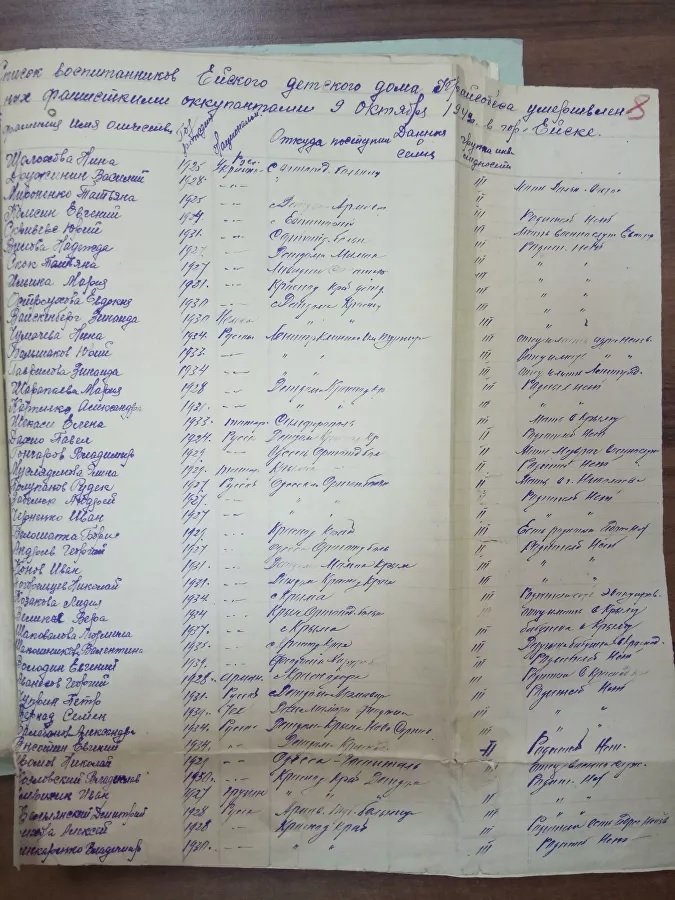Genocide has no statute of limitations: Russia reopens case into Nazi murder of 214 disabled kids

Russia has opened a criminal probe into one of the many crimes committed by occupying Nazi forces, the murder of 214 wards of a shelter for handicapped children in the Krasnodar region by the German deaths squads.
The probe into an alleged act of genocide was launched on Wednesday by Russia’s Investigative Committee, shortly after documents detailing a wartime investigation of the mass killings of children were declassified.
The Krasnodar region remained under Nazi control between August 1942 and February 1943. Soviet territory was perceived by Berlin as the land to be colonized by Germans, so they had no intention to win the hearts of the local population. Instead a brutal regime of terror was imposed, with the dreaded Einsatzgruppen death squads serving as a primary tool. In addition to crushing insurgency, they were also tasked with exterminating those deemed undesirable: Jews, Roma, gay people and mentally or physically impaired individuals.
A memorial to the children murdered in Yeysk and a memorial plaque on the house, from which they had been taken by the Nazis.
Among the thousands of victims of the Sonderkommando SS-10a, the unit stationed in Krasnodar, were children who lived in a shelter in Yeysk, a port city on the coast of the Sea of Azov. The shelter was originally located in Crimea, but was evacuated as the Nazi forces advanced into Soviet territory.
The death squad put the crosshair on the children on October 9, 1942. The goons sent three trucks and forced on them as many children as they could. The vehicles came from the fleet of dreaded gas vans, which pumped exhaust fumes inside to kill the victims before taking them to some discrete location to be dumped into a mass grave. And that is exactly what happened on that day, as well as on the next, when the murder trucks returned for a few dozen kids who managed to hide earlier or were bed-ridden, and were thus left to live one more day.

Documents unclassified earlier this month include a handwritten list of children living in the shelter, as well as a report by a team that exhumed the mass grave in April 1943, after the Nazis were expelled from the Krasnodar region.
The children’s bodies were piled in a trench, many hugging each other or clinging to their crotches, but no visible wounds were to be found, which led the investigators to assume the kids had been buried alive. The events of the mass murder, as well as its scale, were made clearer as more forensic evidence from other mass graves and eyewitness testimonies became available.

The child murders in Yeysk were but one episode in a macabre collection of war crimes traced to Sonderkommando SS-10a, and it was among those mentioned during the first-ever public prosecution of Nazis for war crimes, which happened in Krasnodar in July 1943. In a sense it was a preview of the Nurnberg Trials, though wartime circumstances had an impact on how it went.
For example, none of the German officers of the death squad was captured to be put on trial. Instead 11 collaborators were at the stand. Eight of them were sentenced to hanging, while three others were sent to prison for helping the Nazis round up their victims.
Also on rt.com 75-year-old Reichstag graffiti come to life in new font available for free downloadSome of the criminals of the Sonderkommando SS-10a did get punished, though. Kurt Christmann, who commanded the unit, managed to escape to Argentina under a fake name, but returned to West Germany in 1956. However, his true identity was revealed, and in 1980 he stood trial for the Krasnodar war crimes and was sentenced to 10 years in jail. He died behind bars.
But the Investigative Committee said, as it opened its probe, that other perpetrators escaped justice. “Such crimes have no statute of limitations,” it said in a statement.
Not a single criminal act motivated by ideas of racial supremacy and Nazism should be left unpunished, regardless of how much time passes.
Think your friends would be interested? Share this story!














